A travelling spice box with compartments, based on the drawing in Scappi’s Opera from 1570.
Medieval cooking uses a lot of different spices, and I wanted an efficient (and historically accurate) way to store and carry these for use when cooking at camping events.
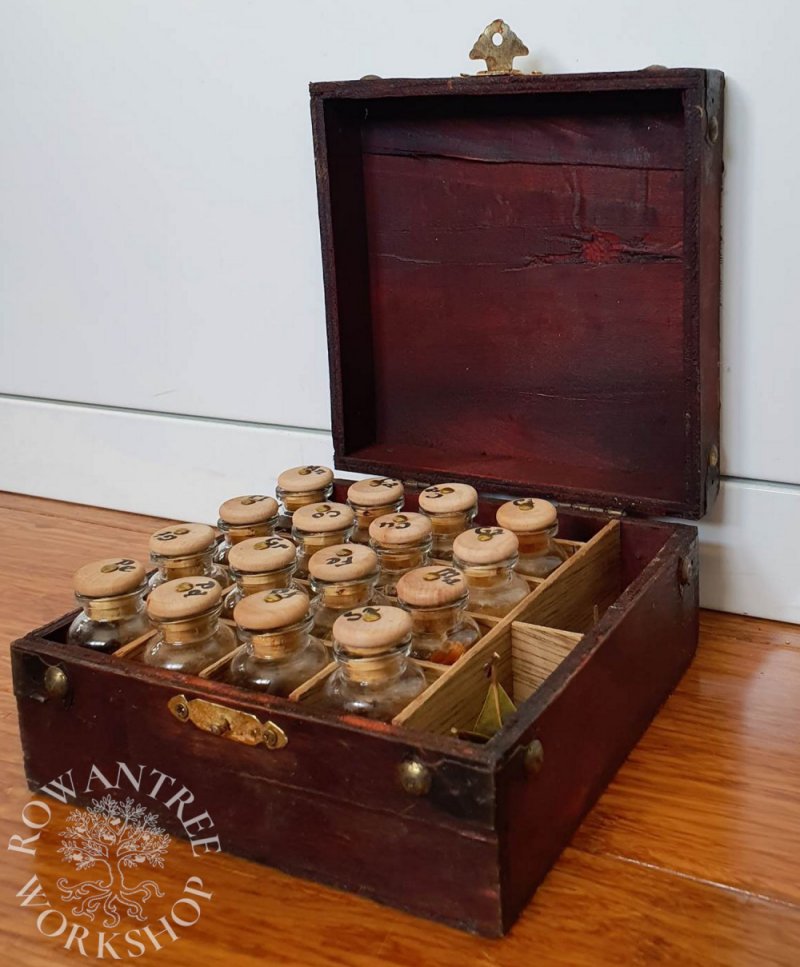
Research and Design
I was excited when I found the image of the spice box on Plate 15 in Scappi’s Opera (Scully 2008) – perfect for the job! His box was divided into 12 partitions, with what look like the tops of small round jars in each section. Later on I was delighted to find a similar image on the title page of Rumpold’s En New Kochbuch.



I planned to make a similar box, with thin wood partitions, to hold small glass jars of the most useful medieval spices.
Construction
I had planned to make the box, but I found one of a good size in a charity shop for a few dollars. It needed a better catch – easy to get from the hardware store.
I thought finding small jars might be tricky, but the local craft shop had them. The jars were slightly smaller in relation to the box, so I could fit in 16, with some room over. Slightly bigger jars would have been ideal (to ensure I had enough of each spice) but these were close enough.
I wanted to replicate the look of the lids in the woodcut – round, with a dot in the middle. I made lids using small corks glued to small wooden toy wheels and then pinned them together with a brass escutcheon pin – perfect!
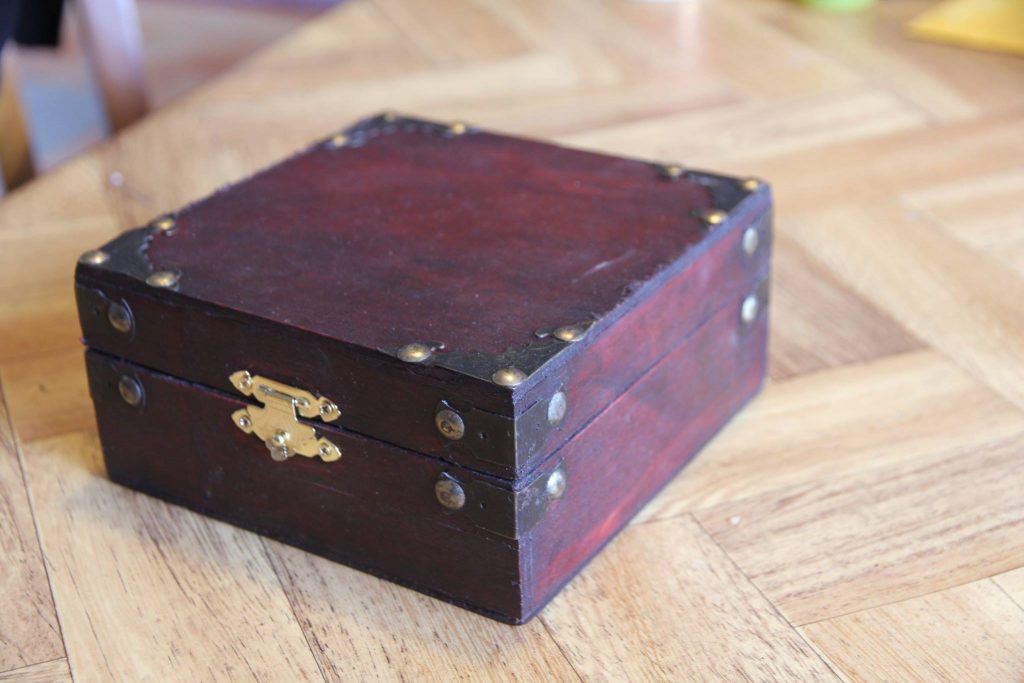
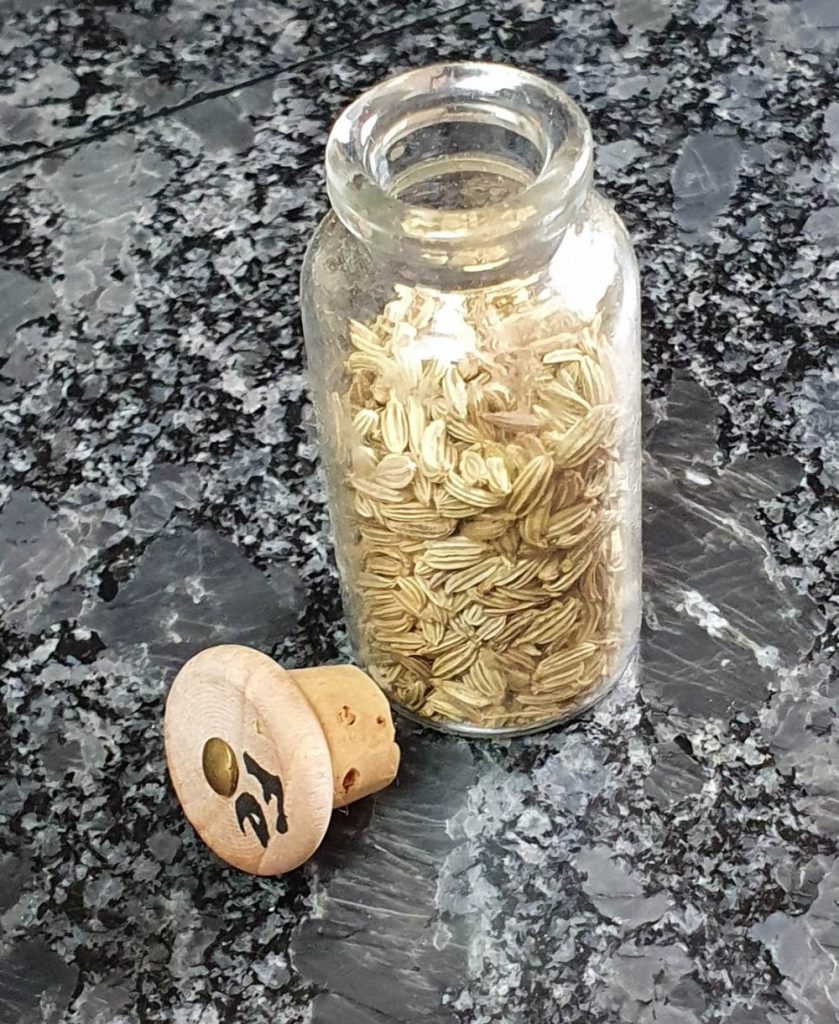

All the bottles look the same from on top, so I decided to mark the lids with the first letters of the spice name – a play on the Periodic Table (not period, but amusing!).
Next, the partitions. I make a test version using thin cardboard, then cut them out of fine 3-ply and sanded well. By cutting slots halfway through top and base, they go together easily.
I went through several of my usual medieval cookbooks to look for the most common spices. I ended up with: Aniseed, Cardamom, Caraway, Cinnamon, Cloves, Coriander, Cumin, Galangal, Ginger, Grains of Paradise, Fennel, Mace, Pepper and Saffron. And two common spice mixes – Poudre Douce and Poudre Forte. In the longer slots, I put rolls of cinnamon bark, nutmegs and a grater, and bay leaves.
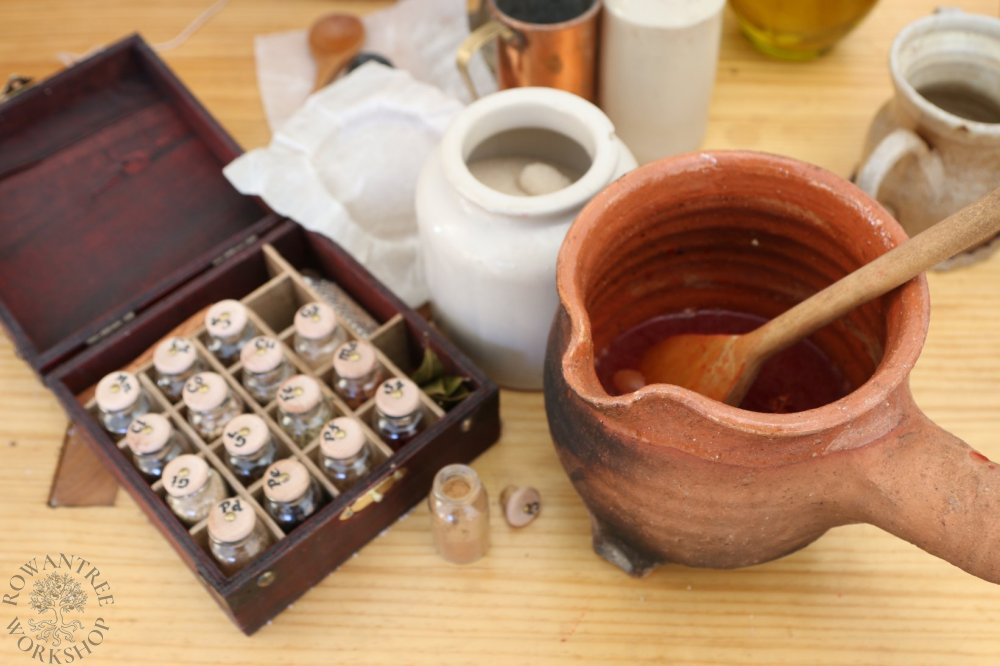
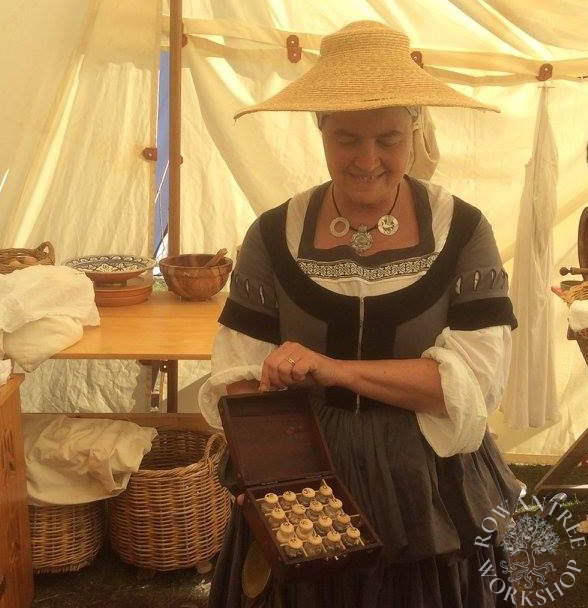
It was fun to take it camping and actually use the spices. It has proved really useful, but some spices we need in larger quantities – especially pepper, so it now has a separate little round box.

